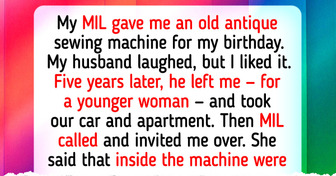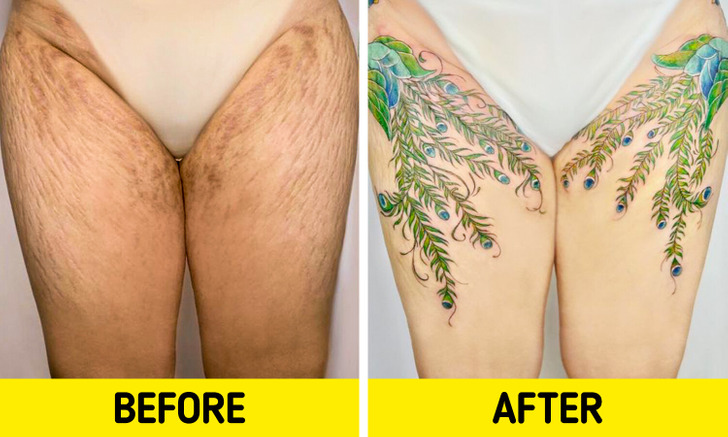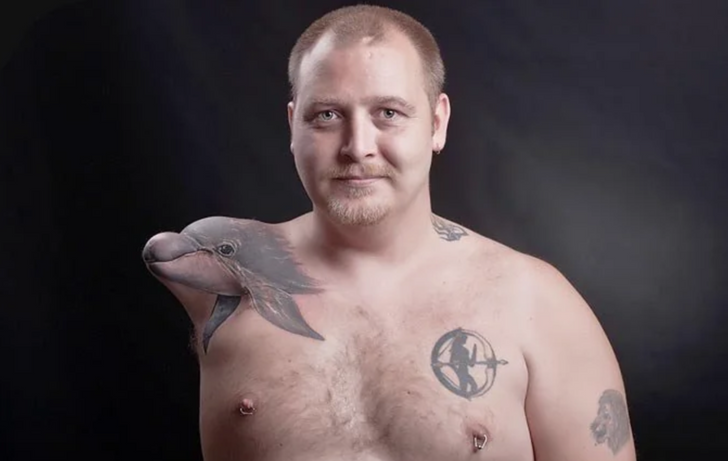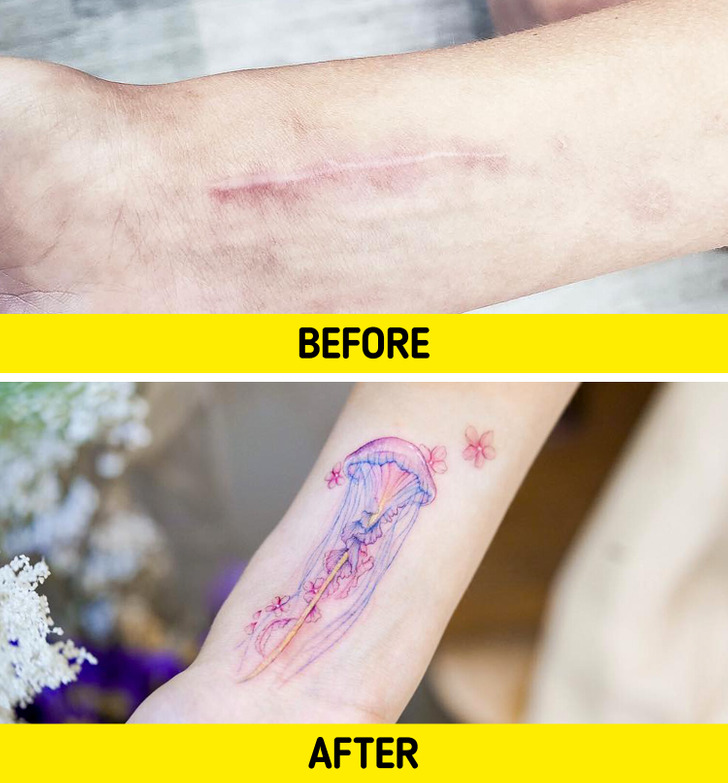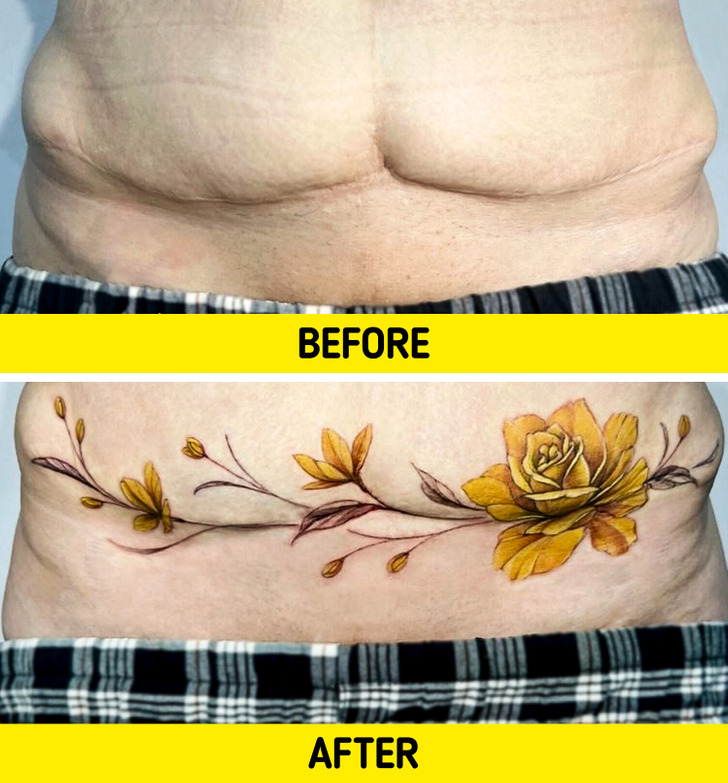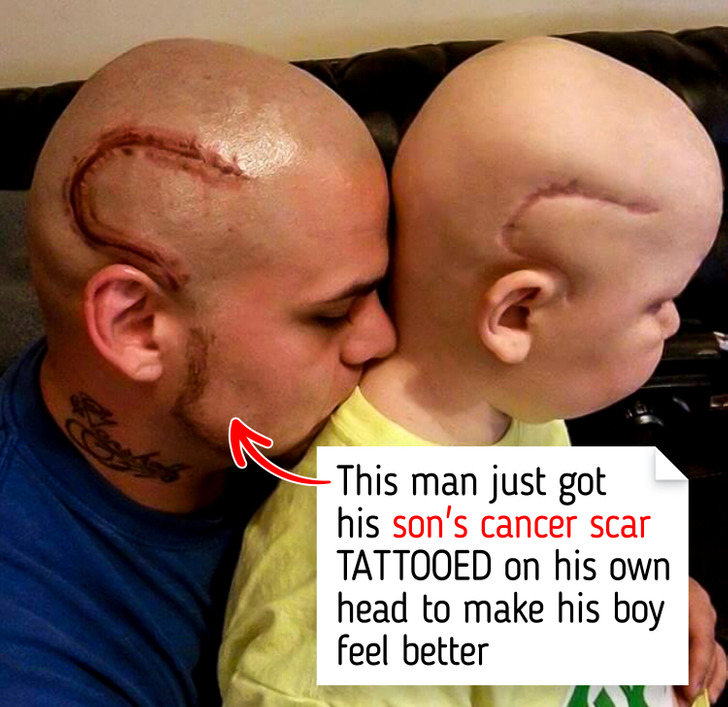I think, I can never earn over which I paid by my precedent employer, but I was wrong, world is so large to try their fate. but now I am making $52/h even more,and easily earn minimum $1300/week, on the experience everyone must try to do work online, easy way to earn, here's an example.
𝐰𝐰𝐰.Richnow05
11 People Who Found Ways to Turn Scars Into Stunning Works of Art
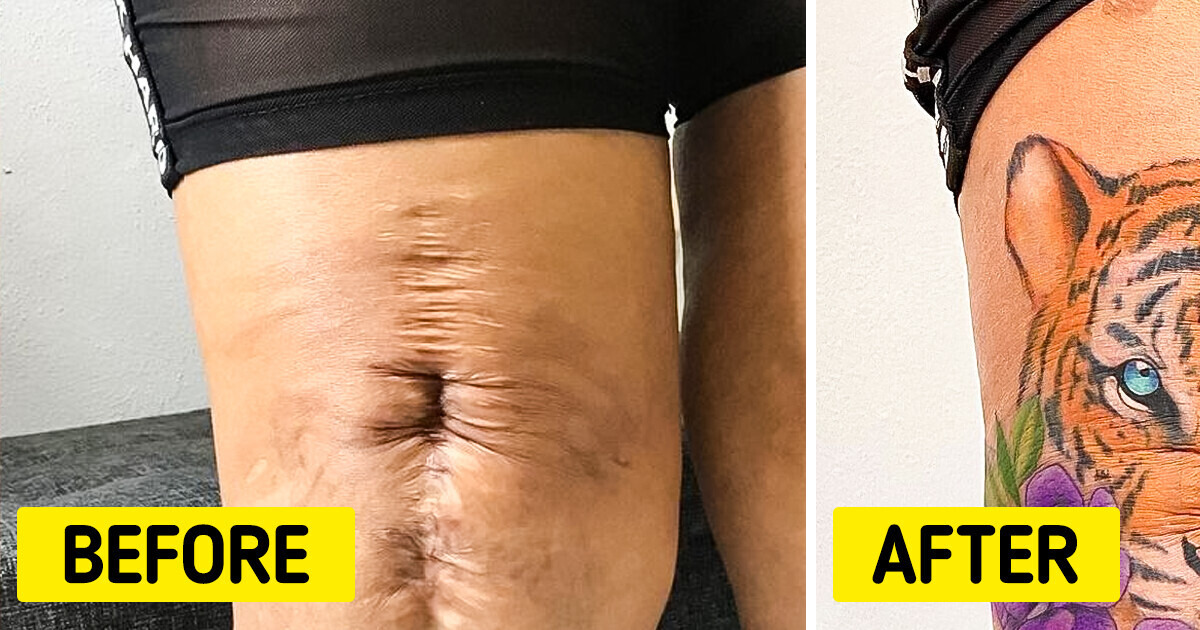
Covering scars with tattoos has become a cool way to transform life’s little battle marks into something meaningful. But before you dive in, finding the right artist and knowing what to expect can make all the difference in getting the perfect scar cover-up tattoo. Here’s your go-to guide on picking a pro, choosing a killer design, and making sure your new ink looks (and feels) like a million bucks.
Why Do People Choose to Tattoo Over Scars?
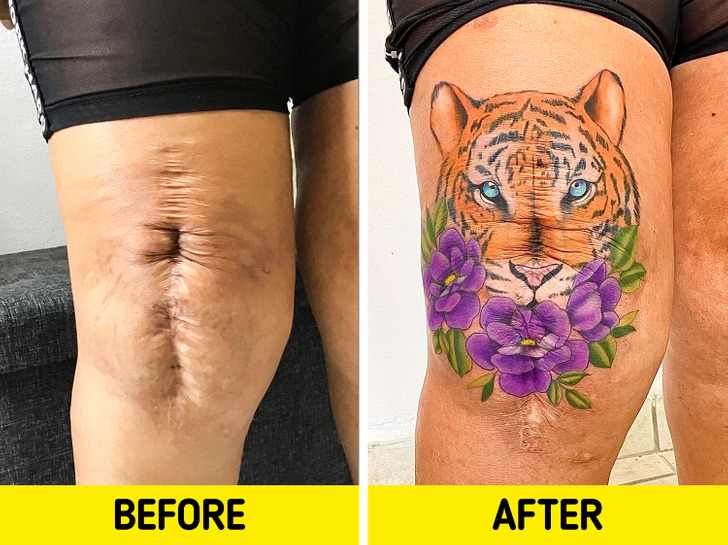
Getting a tattoo over a scar isn’t exactly a walk in the park. Scar tissue can be a bit trickier to tattoo than smooth, unmarked skin, and yes, it might sting a little more, too. Plus, there are some extra things to consider before you dive into a scar cover-up tattoo.
Funny enough, scars and tattoos have a bit in common — they both tell a story, marking moments from your life. For some people, scars bring back fond memories, but for others, they’re just not something they want to see every day. Whether you embrace your scars or prefer covering scars with tattoos, it’s entirely your call.
If you’ve had surgery on a tattooed area, your ink might look a bit off afterward. But here’s a cool trick: some surgeons can actually make incisions in a way that lets your tattoo cleverly disguise the scar.
Now, while it’s usually possible to tattoo over scars, it’s no easy task. Working with scar tissue requires a bit of skill, so finding an experienced artist is key. They can even turn your scar into part of the design if that’s something you’re open to. There are so many scar tattoo ideas out there to consider, from intricate designs to subtle cover-ups.
So why do people do it? Well, some folks just aren’t thrilled with the look of their scars or stretch marks, and that’s totally understandable. Sure, everyone’s got scars, but some people are simply more comfortable with theirs than others.
For others, especially those with scars from major life events— like surgeries or accidents — getting a tattoo can feel empowering, like taking back ownership of their body. For example, many women who’ve had mastectomies feel a renewed confidence when they cover their scars with beautiful, custom tattoos.
Thinking of going for a tattoo over a scar? Here’s a look at what you might expect when covering different types of scars with tattoos.
Amputation or Skin-Removal Scars
When skin has been removed or stretched, these scars are often smooth. Generally, areas like these are suitable for tattooing if they’re not too sensitive. But heads up: tattooing over these scars can pack a punch in the pain department, so brace yourself!
Keloid Scars
Keloid scars are a bit of a challenge for a scar cover-up tattoo. Since they’re raised and may scar further after tattooing, some people choose to only partially cover a keloid. Others get creative by working around the keloid, blending it into the tattoo design to disguise it while reducing the chance of additional scarring.
Burn Scars
Burn scars can be particularly sensitive and often have an irregular texture, making them a bit tricky for tattooing. But don’t worry — covering scars with tattoos is doable, especially with the right design featuring varied lines and colors to artfully mask these scars.
Scars on the Stomach
Stretch marks and abdominal scars, from surgeries or a C-section, can be covered with a tattoo. Just keep in mind that if your body shape changes, say with pregnancy or weight loss, your scar cover-up tattoo might stretch or shrink along with it. If a big body change is in your plans, consider holding off on your stomach tattoo until after.
Surgery Scars
Surgery scars are usually clean and straight, making them easy to incorporate into a tattoo design. Many people choose to blend these scars into the edges of their tattoo for a seamless look. For mastectomy scars, for example, you can tattoo directly over them, once they’re fully healed. These types of tattoos for scars can make a huge difference.
With plenty of scar tattoo ideas out there, an experienced artist can help you pick a design that works well for your particular scar type and gives you the confidence boost you’re looking for.
Are There Risks Involved in Tattooing Over Scars?
Thinking about covering up a scar with some fresh ink? Here are a few things to keep in mind before you commit.
- Your tattoo could cause more scarring.
This is a biggie, especially if you’re prone to keloid scars. Keloids tend to be thick, raised, and can spread beyond the original wound. If you’re prone to these, getting a tattoo on top of a keloid could cause it to worsen. If you want to go for it, it’s usually best to wait at least a year after the scar has formed. In the case of larger or deeper scars, you might need to wait a bit longer—sometimes up to 3-5 years—for the best results. - The color might bleed.
Scar tissue is tougher and doesn’t hold ink the same way as regular skin, which can cause the color to migrate, making your tattoo look a bit blurry. Working with a tattoo artist experienced in covering scars can help minimize this risk. - Your tattoo might look irregular.
Some scars, like stretch marks and acne scars, are atrophic, meaning they’re indented. While it’s usually safe to tattoo over these once healed, the color and texture might make it a challenge to create a smooth look. A skilled tattoo artist can help you choose a design that works best with your scar, or you might consider a medical-grade tattoo that’s better matched to your skin tone.
Do tattoos over scars hurt more?
Everyone’s got a different pain threshold, so while some people feel like a tattoo is barely more than a scratch, others find it pretty intense. But when it comes to tattooing over scar tissue, things tend to get a bit more painful than usual. Scar tissue is often more sensitive than unscarred skin, and for some folks, it can be very painful.
Experts say that tattooing scars can be especially uncomfortable for people whose scars involve nerve damage or compression — like those left from amputations. And not all scars are created equal when it comes to pain levels.
Keloid scars, atrophic scars, hypertrophic scars, and burn scars are usually more sensitive, with larger and deeper scars likely being the most painful to tattoo. On the other hand, small scars that have healed flat may be a bit easier and less painful to work with.
What is the best tattoo design to cover a scar?
Choosing the best design for a tattoo over a scar depends on the type, size, and shape of the scar you’re working with. Fortunately, there are tons of scar tattoo ideas out there that can help transform any scar into a meaningful piece of art.
- For starters, floral designs make a great choice for covering scars with tattoos. The organic shapes and flowing lines of flowers can naturally disguise irregularities in the skin, making them an ideal scar cover-up tattoo. If your scar has an unusual shape, leaves, vines, or petals can work wonders to blend it seamlessly into the design.
- Animal and nature-inspired tattoos for scars are also popular, as they offer flexibility in design. Birds, fish, and even landscapes can be customized to wrap around the scar, integrating it into the tattoo itself. These designs work particularly well with stretch marks or scars with a longer, linear shape.
- For people with scars that are raised or have a unique texture, abstract or geometric designs can add a bold touch. The lines and shapes in these designs can distract from the scar’s texture, making it a clever choice for those wanting a subtle yet stylish scar cover-up tattoo.
- The best tattoo design to cover a scar is one that feels personal to you. An experienced tattoo artist can help you explore scar tattoo ideas and create a custom piece that turns your scar into something beautiful and unique.
How Long Should You Wait to Tattoo Over a Scar?
Timing is key when considering a tattoo over a scar. In most cases, you should wait until the scar is fully healed before booking your tattoo session. Generally, this means waiting at least one year, but for larger or deeper scars, you might need to wait even longer — sometimes up to three to five years. Patience here can make all the difference in how your scar cover-up tattoo looks and heals.
The healing process can vary depending on the type of scar:
- For example, if you’re planning to cover a surgical scar or a burn scar, make sure it’s fully settled and no longer sensitive or pink.
- New scars, especially those that are still red or raised, are not yet ready for covering scars with tattoos and may react poorly to the tattooing process, increasing the risk of further irritation or damage.
- If you have a keloid scar or a scar prone to raised tissue, it’s wise to wait until it’s fully flattened out, which can take several years. Tattooing too soon can cause more scarring, so this waiting period is essential. Also, consulting with a skilled tattoo artist who specializes in tattoos for scars can help you understand when your scar is ready.
- Ultimately, the best approach is patience. Letting your scar fully heal will not only ensure your scar tattoo ideas come to life in the best way possible but will also help protect your skin and keep the tattoo looking sharp for years to come.
How to Find a Reputable Tattoo Artist?
So, you’ve decided to get a tattoo over a scar — great! Now, finding a reputable artist with experience in scar cover-up tattoos is the crucial first step. Start by calling around to local tattoo shops and ask if they have artists who’ve worked with scar tissue before. Not every artist has this skill set, so it’s worth doing a little research.
Once you’ve got a list of potential artists, check out their portfolios. Look specifically for tattoos for scars they’ve done in the past. You want someone whose style you love and who knows how to work with scar tissue to create a smooth, clean look. And while you’re at it, make sure their shop is squeaky clean and up to professional standards. Hygiene is a huge factor in reducing risks like infections or tattoo blowouts (where ink seeps too far into the skin and blurs the tattoo).
When you’ve found the right artist, bring in some scar tattoo ideas you’re excited about and discuss them together. They might have some fresh suggestions, too, that could work even better with your scar’s shape and texture.
For extra inspiration, don’t forget to browse social media — there’s no shortage of covering scars with tattoos posts out there. Seeing others’ scar cover-ups might just spark the perfect idea for your own tattoo transformation!
A size 14 woman recreates celebrity looks to prove you don’t need to be a size zero to be stylish.
Comments
Related Reads
Model Lost Entire Lips in Pitbull Attack, And She Reflects on Her Recovering Journey
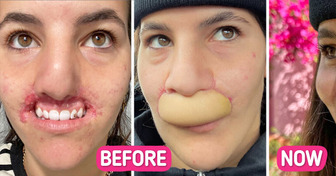
My Baby Cries Hysterically Every Time My Mother-in-Law Is Around — I Finally Discovered Why
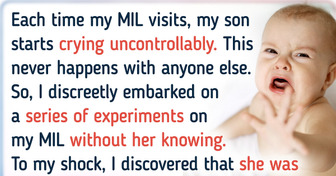
I Want to Run Away From My Fiancée After My Future In-Laws Accidentally Shared Their Nasty Family Secret

My Only Son Excluded Me From His Wedding Because of His Fiancée’s Dark Scheme

A Little Girl Was Called a ’Monster’ Because of Her Birthmark, Until Her Mom Brought Back Her Sweet Smile
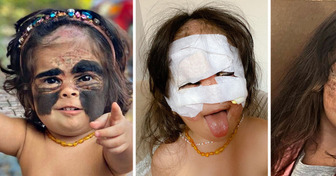
Kim Kardashian Is Trolled for Editing Her Recent Pic, and It’s Taking the Internet by Storm

21 Things Parents and Children Learned When They Stopped Living Under the Same Roof

My Friend Said I Was Cheap for Splitting the Bill—But Karma Hit Back Fast

12 Stories That Are Redefining What It Means to Be a Grandparent Today

I Refused to Choose Which Grandchildren to Love
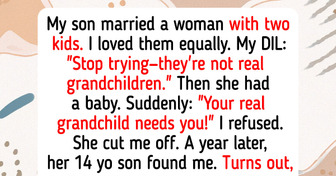
I Refused to Pay for My Stepson’s College—He’s Not My Responsibility

15 Stories of Kindness That Prove You’re Not Alone—Even When Everything Feels Lost
